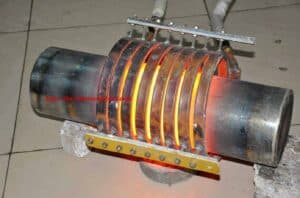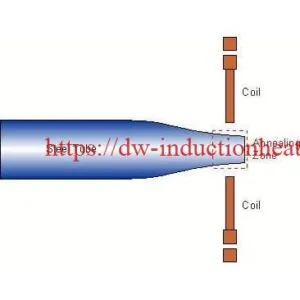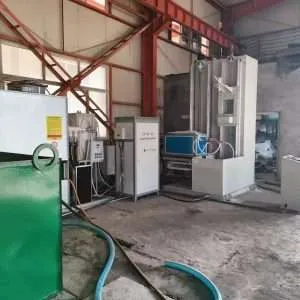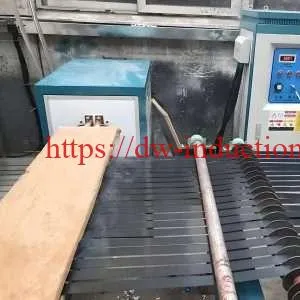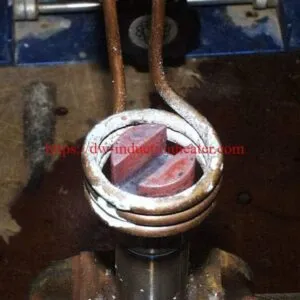-
1/3
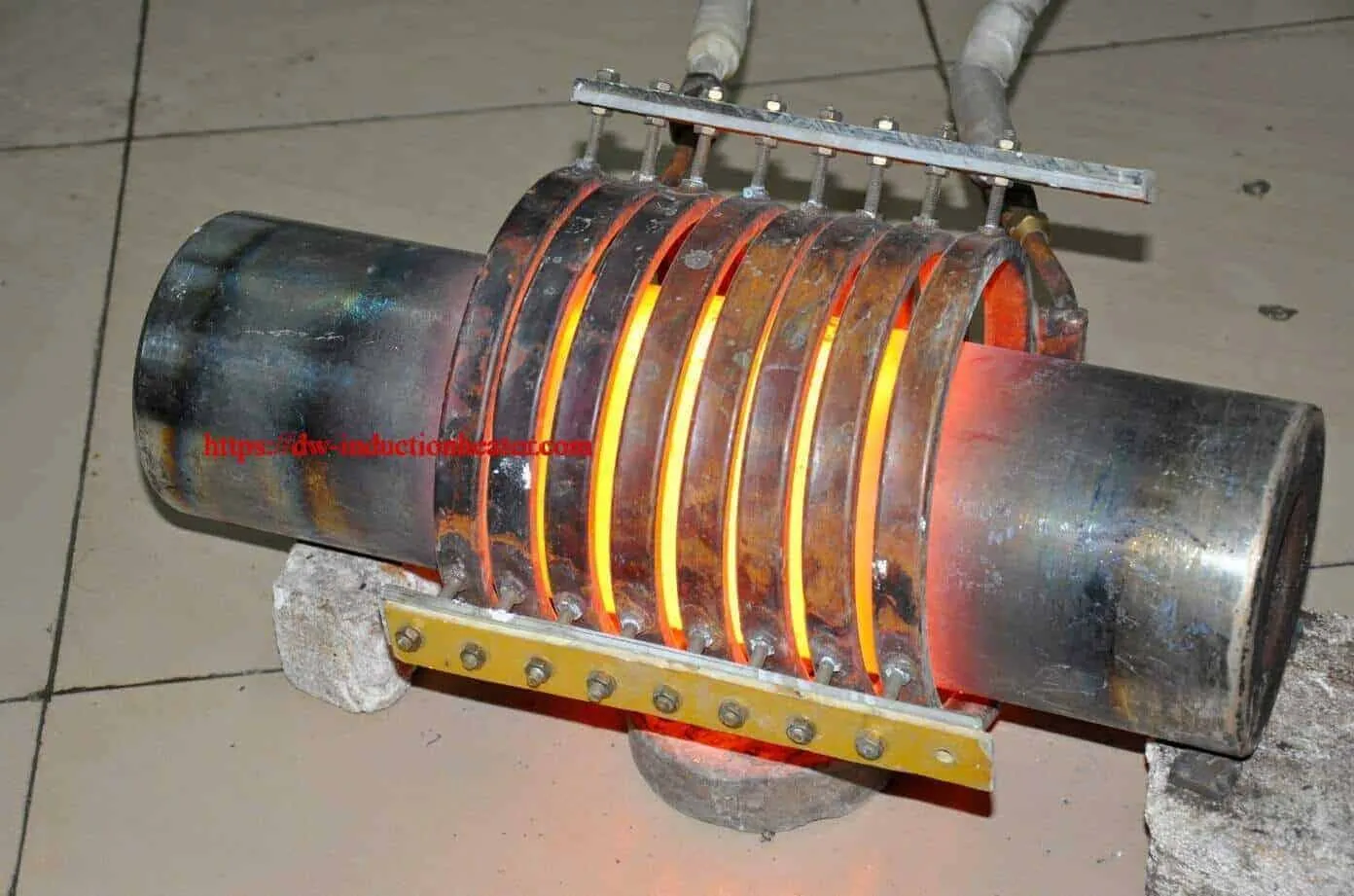
-
2/3
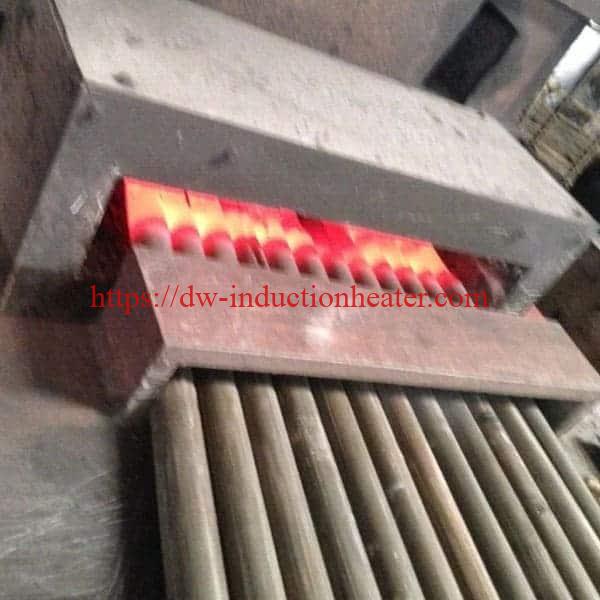
Induction Annealing Steel Pipe and Tube
Induction Annealing Steel Pipe and Tube With Medium Frequency Heating Equipment
Induction annealing represents a critical heat treatment process in modern steel pipe and tube manufacturing. This advanced thermal processing technique utilizes electromagnetic induction to precisely heat metal workpieces, followed by controlled cooling to achieve specific metallurgical properties. For manufacturers seeking to optimize material characteristics while maintaining production efficiency, induction annealing offers significant advantages over traditional heat treatment methods. This article explores the comprehensive technical parameters, process specifications, and industrial applications of induction annealing for steel pipes and tubes.
What is Induction Annealing?
Induction annealing is an electromagnetic heat treatment process that reduces hardness, increases ductility, and relieves internal stresses in steel pipes and tubes. Unlike conventional annealing methods that require lengthy heating cycles in large furnaces, induction annealing delivers rapid, localized heating through electromagnetic fields generated by induction coils. This process restructures the metal’s crystalline structure, transforming it from a stressed, hardened state to a more workable condition.
Technical Parameters of Induction Annealing Systems
Power Requirements and Specifications
- Frequency Range: 1-400 kHz (typically 3-10 kHz for larger diameter pipes, 10-100 kHz for medium pipes, and 100-400 kHz for small diameter tubes)
- Power Density: 15-50 kW/dm² for carbon steel pipes
- Power Capacity: Systems ranging from 50kW to 1MW depending on pipe diameter and production throughput
- Voltage Supply: 380-480V, three-phase input
- Power Factor: >0.95 with power factor correction systems
- Efficiency: 80-95% energy conversion efficiency
Temperature Parameters
- Annealing Temperature Range:
- Carbon Steel: 650-750°C (1200-1380°F)
- Stainless Steel: 1050-1150°C (1920-2100°F)
- Alloy Steel: 700-900°C (1290-1650°F)
- Temperature Uniformity: ±10°C across pipe circumference
- Temperature Control Accuracy: ±5°C with advanced PID control systems
- Heating Rate: 5-50°C/second (adjustable based on material thickness)
- Soaking Time: 10-120 seconds depending on material thickness and grade
Cooling Parameters
- Cooling Methods:
- Forced Air: 5-20°C/second cooling rate
- Water Mist: 20-50°C/second cooling rate
- Controlled Atmosphere: 2-10°C/second cooling rate
- Cooling Gradient Control: Programmable multi-zone cooling
- Cooling Time: 30-300 seconds depending on material requirements
Material Processing Capabilities
- Pipe Diameter Range: 10mm to 1200mm
- Wall Thickness Range: 0.5mm to 50mm
- Material Compatibility:
- Carbon Steel (ASTM A53, A106, API 5L)
- Stainless Steel (304, 316L, 321, 410, 430)
- Alloy Steel (P11, P22, P91)
- Duplex and Super Duplex Stainless Steel
- Production Capacity: 0.5-10 tons/hour depending on system configuration
Process Control Parameters
Induction Coil Design Specifications
- Coil Geometry: Helical, transverse flux, or longitudinal flux configurations
- Coil Material: High-conductivity copper tubing (99.9% purity)
- Coil Cooling: Deionized water at 4-8 bar pressure, flow rate 20-60 L/min
- Coil-to-Work Distance: 5-25mm (optimized based on pipe diameter)
- Coil Efficiency Factor: 0.75-0.90 depending on design and application
Automation and Control Systems
- Control Architecture: PLC-based with HMI interface
- Temperature Monitoring: Dual-wavelength pyrometers with accuracy of ±2°C
- Process Data Acquisition: 100ms sampling rate with real-time process feedback
- Quality Control Integration: In-line hardness testing and dimensional verification
- Industry 4.0 Compatibility: OPC-UA communication protocol for data exchange
Metallurgical Transformations and Results
Achievable Material Properties
- Hardness Reduction:
- Carbon Steel: From 35-45 HRC to 10-20 HRC
- Stainless Steel: From 25-35 HRC to 8-15 HRC
- Yield Strength Modification:
- Carbon Steel: Reduction from 700-900 MPa to 300-450 MPa
- Stainless Steel: Reduction from 550-750 MPa to 250-350 MPa
- Elongation Improvement: Increase from 5-10% to 20-30%
- Grain Structure: Refined equiaxed grains with sizes of 5-20 μm
Microstructural Changes
- Phase Transformation: Conversion of martensitic or bainitic structures to ferrite and pearlite
- Carbide Precipitation Control: Spheroidization of carbides for improved machinability
- Residual Stress Reduction: >85% reduction in internal stresses
Energy Efficiency and Environmental Considerations
- Energy Consumption: 0.2-0.5 kWh/kg of processed material
- Carbon Footprint: 60-80% reduction compared to conventional furnace annealing
- Process Emissions: Zero direct emissions during operation
- Water Consumption: Closed-loop cooling systems with minimal makeup water requirements
Industrial Applications and Benefits
Induction annealing delivers critical advantages for steel pipe and tube manufacturers across multiple industries:
- Oil and Gas Industry: Enhanced corrosion resistance and improved mechanical properties for downhole tubing and transport pipelines
- Automotive Sector: Precisely controlled material properties for exhaust systems, structural components, and hydraulic lines
- Chemical Processing: Stress-corrosion cracking resistance for process piping systems
- Construction Industry: Improved formability for structural tubes and architectural applications
- Heat Exchanger Manufacturing: Optimized thermal conductivity and mechanical stability for tube bundles
Conclusion
Induction annealing technology represents a significant advancement in steel pipe and tube processing. The precise control of technical parameters enables manufacturers to achieve specific material properties while maximizing production efficiency. As industries continue to demand higher quality standards and improved material performance, induction annealing systems with their advanced technical capabilities will remain essential in modern steel processing operations.
By implementing induction annealing with properly optimized technical parameters, manufacturers can ensure consistent quality, reduce energy consumption, and meet the most demanding specifications for steel pipe and tube applications across diverse industrial sectors.

